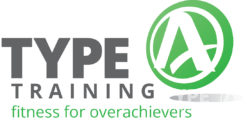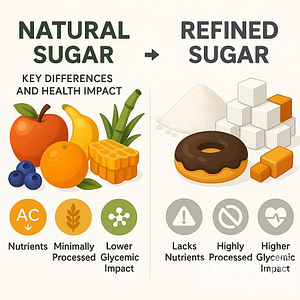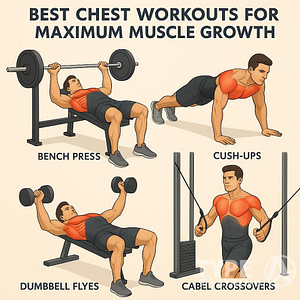Resistance training, often synonymous with strength training or weight training, is a cornerstone of physical fitness. It involves working against a force to build muscle strength and endurance. It’s much more than just lifting weights. It incorporates a variety of equipment and exercises that target different muscle groups, enhancing your overall muscular strength.
The health benefits of engaging in resistance training are extensive. Regular resistance training helps improve joint function, bone density, and muscle mass. These physical improvements can make day-to-day activities easier, boosting your functional ability to perform tasks like carrying groceries or climbing stairs. Beyond the physical, resistance training can also provide mental health perks, relieving stress and potentially improving cognitive function.
By embracing resistance training as part of a balanced physical activity regimen, you are setting a foundation for a healthier lifestyle. Your muscles become stronger and more resilient, potentially reducing the risk of injury in both athletic endeavors and commonplace movements. This type of training can be adapted to any fitness level, so whether you’re just starting out or looking to intensify your exercise program, resistance training has a place in your journey towards optimum health.
Popular posts:
The Fundamentals of Resistance Training
In this section, you’ll learn exactly what resistance training encompasses, the tools you can use, and how to structure your workouts with sets, repetitions, and rest for optimal outcomes.
Defining Resistance Training
Resistance training is a method of physical activity that involves working against a force to increase muscle strength and endurance. This force can come from your own body weight, free weights like dumbbells and barbells, resistance bands, or specialized machines designed to target specific muscle groups.
Types of Resistance
Benefits of Resistance Training
Resistance training, a form of exercise that challenges your muscles, offers wide-ranging benefits affecting your physical and mental health, as well as your daily activities. Explore the specific advantages to understand why integrating resistance workouts into your regimen can be transformative.
Physical Health Improvements
Muscle Mass and Strength: Engaging in resistance training can lead to significant gains in your muscle mass and strength. This can benefit you by enhancing your overall metabolism, which in turn can help in maintaining a healthy weight.
Bone Density: Regular resistance exercises have been shown to increase bone density. Higher bone density can reduce your risk of fractures and osteoporosis, particularly as you age.
Cardiovascular Health: Incorporating this type of exercise can have a positive impact on your heart health. It can help in managing
Mental Health Advantages
Mental Well-being: Sustained resistance training routines can also lead to mental health improvements, such as reduced symptoms of anxiety and depression. It can enhance cognitive function, mood, and even your sleep quality, leading to an overall boost in your quality of life.
Functional Benefits for Daily Living
Day-to-Day Activities: Stronger muscles and bones from resistance training facilitate your ability to perform daily activities with more ease and less risk of injury. Whether it’s carrying groceries or climbing stairs, you’ll likely notice an improvement in how you navigate everyday tasks.
Techniques and Training Principles
Before delving into resistance training, it’s crucial to understand certain techniques and principles that will maximize your results while keeping you safe. These include mastering the proper form, progressively challenging your muscles, and incorporating variety to avoid plateaus and sustain progress.
Proper Form and Safety
When you engage in resistance training, maintaining proper form is essential to prevent injury and ensure the effectiveness of each exercise. For instance, when performing squats, ensure your feet are shoulder-width apart and your back is straight as you lower down. Learning the correct techniques often requires observation, education, and occasionally, professional guidance. Paying attention to body alignment and movement patterns reduces the risk of strains or sprains.
Progressive Overload and Adaptation
Your muscles adapt to stress through a process called progressive overload. To continuously improve strength and size, you must gradually increase the resistance or intensity of your workouts. This progression can take the form of heavier weights, increased reps, or more challenging exercises. Be mindful that these increases should be incremental to avoid overtraining and injury.
Variability and Training Cycles
Integrating variety into your training regimen by varying exercises, the intensity, and the volume helps in stimulating different muscle groups and prevents boredom. A well-structured program might include different training cycles focusing on strength, hypertrophy, or endurance. By doing so, your body is constantly challenged, facilitating continued growth and improvement over time.
Developing a Resistance Training Program
When embarking on resistance training, it’s crucial to have a well-structured program. Creating a tailored and progressive plan can help you achieve your strength and fitness goals effectively and safely.
Setting Goals and Assessing Fitness Levels
Before you start lifting weights at the gym or at home, establish clear, attainable goals. Are you aiming to increase muscle mass, improve endurance, or enhance overall functional strength? Assessing your current fitness level is equally important. This might include tracking your current strength by the amount of weight you can lift, or having a trainer evaluate your fitness. Based on this, you can set realistic milestones.
Creating a Balanced Routine
A balanced workout routine should target all the major muscle groups. This prevents imbalances that could lead to injury. Variety is key in a fitness program, alternating between upper and lower body workouts, and integrating different types of resistance like free weights, machines, and bodyweight exercises. It should also progressively increase in intensity to continue challenging your muscles effectively.
- Monday: Upper body (e.g., chest, back, shoulders, arms)
- Wednesday: Lower body (e.g., quads, hamstrings, calves, glutes)
- Friday: Core and flexibility (e.g., abs, lower back, yoga)
Incorporating Recovery into Your Program
Recovery is a vital component of any workout regime. It allows your muscles to repair and strengthen. Ensure you have at least one full rest day per week and consider activities that support recovery, such as light cardio, stretching, or foam rolling. Balance intense sessions with lighter ones and pay attention to your body’s signals to avoid overtraining.
Targeting Major Muscle Groups
In resistance training, focusing on major muscle groups increases overall strength and enhances your ability to perform daily activities. Each muscle group responds differently, so your approach should vary depending on whether you’re working on your upper body, core and back, or lower body.
Upper Body Workouts
Your upper body has several key muscle groups including the chest, shoulders, and arms. Effective exercises for these areas typically involve push and pull motions. For example:
- Chest: Incorporate exercises like bench presses and push-ups to build strength.
- Shoulders: Include movements such as shoulder presses and lateral raises.
- Arms: Bicep curls and tricep dips are fundamental to arm strengthening.
Remember to maintain balance by working both opposing muscle groups equally.
Core and Back Training
For a strong core and back, focus on exercises that promote stability and alignment. Your core is the center of your body’s strength, thus vital for overall fitness:
- Core: Utilize planks and Russian twists to challenge these muscles.
- Back: Rows and lat pull-downs are essential for building a solid back.
A strong core supports a powerful back and vice versa, so it’s beneficial to integrate exercises that engage both areas concurrently.
Lower Body Exercises
Your lower body consists of the legs, including quadriceps, hamstrings, calves, and to some extent, the glutes. It’s important to strengthen these to support your knees and overall lower body function:
- Quadriceps and Hamstrings: Squats and lunges provide a robust workout for these muscles.
- Calves: Calf raises should be a staple for well-defined lower legs.
- Glutes: Bridges and deadlifts are key for glute engagement.
Resistance Training Across Different Ages and Conditions
Resistance training is a versatile form of exercise that can be adapted to suit your specific age and health condition. It emphasizes the need for an individualized approach to ensure safety, effectiveness, and enjoyment.
Adaptations for Older Adults
As you age, maintaining muscle mass and bone density becomes increasingly important.
Resistance training is particularly beneficial for older adults, as it can help combat sarcopenia – the natural decline in muscle mass due to aging.
To maintain safety and maximize benefits, you should focus on low-impact exercises and a moderate intensity. This intensity should consider any existing joint issues or mobility limitations.
Exercises that promote hypertrophy, or muscle growth, are valuable to increase strength and improve overall functionality. This enhances your ability to perform daily tasks with ease.
- Modified Exercises: Utilize resistance bands or light weights; focus on a full range of motion.
- Frequency: Aim for two to three times a week, allowing for adequate rest.
- Arthritis Considerations: Gentle routines that avoid excessive strain on joints affected by osteoarthritis.
Special Considerations for Chronic Conditions
When dealing with chronic conditions like type 2 diabetes or arthritis, resistance training can offer significant benefits. However, it’s important to tailor your routine to accommodate your health situation.
Controlled resistance exercise can help regulate blood glucose levels, which is critically important for managing diabetes.
It is essential that you start slowly and build intensity gradually to reduce the risk of injury. This will also ensure that your body adapts properly to the stress of exercise.
- Personalized Plan: Establish a workout plan that takes into account your condition and its limitations.
- Professional Guidance: Consider working with a fitness professional knowledgeable about your condition.
- Regular Monitoring: Keep track of how exercises affect your symptoms and blood glucose levels, adjusting as necessary.
Comparing Resistance Training with Aerobic Exercise
When you engage in resistance training, your primary focus is on enhancing muscular strength and endurance by performing exercises that challenge your muscles with weights or other forms of resistance.
This training promotes muscle fiber growth, leading to increased muscle mass and strength. Flexibility can also be improved if resistance training is accompanied by stretching exercises.
In contrast, aerobic exercise emphasizes cardiovascular health by increasing your heart rate and respiration.
Activities like running, swimming, or cycling fall into this category, which aim to improve the efficiency of your heart, lungs, and circulatory system.
Aerobic workouts also contribute significantly to overall endurance, since they train your body to perform physical activity over longer periods.
| Resistance Training | Aerobic Exercise | |
|---|---|---|
| Focus | Muscular strength and endurance | Cardiovascular fitness |
| Benefits | Increases muscle mass, improves flexibility | Boosts endurance, promotes heart health |
| Exercise Examples | Weight lifting, squatting | Running, cycling |
Resistance Training and Weight Management
Resistance training is a powerful tool to help you manage your body weight. By engaging in activities such as weight training, you not only build lean muscle mass, but you also increase your metabolic rate.
Here’s how it works:
- Increased Calorie Burn: Lifting weights or engaging in resistance exercises helps you burn more calories both during and after your workout.
- Higher Metabolic Rate: More muscle means a higher resting metabolic rate, meaning you burn more calories even when you’re not active.
- Reduction in Body Fat: Regular resistance training can lead to a reduction in body fat as muscle tissue is more metabolically active than fat.
Key Benefits:
- Sustainable Weight Management: Instead of quick fixes, building muscle contributes to a more sustainable body weight management over time.
- Enhanced Muscle to Fat Ratio: As lean muscle mass increases, the proportion of fat decreases, which is beneficial for overall health.
Remember, consistency is crucial; you must keep up with your resistance training regimen to see long-term results.
Additionally, combining resistance training with a balanced diet intensifies the benefits, including better weight and fat management.
It’s important to perform resistance exercises with proper form to prevent injury and maximize results. If you’re new to this form of exercise, consider seeking guidance from a fitness professional.
Incorporate resistance training into your routine several times a week, and you’ll likely notice improvements in body composition and metabolic health.
Common Myths and Misconceptions
Resistance training is surrounded by myths that can deter you from incorporating it into your fitness routine. Here’s a breakdown of some common misconceptions:
- Myth: Weights Will Make You Bulky
- Fact: Weightlifting enhances muscle tone and strength without necessarily increasing size. This is especially true for women due to hormonal differences.
- Myth: It’s Only for the Young
- Fact: Resistance training is beneficial at any age and can help counteract muscle loss and combat gravity’s effects on the body.
- Myth: It Harms Your Joints
- Fact: When done with proper form and technique, it can actually strengthen the muscles around your joints.
- Myth: High Reps Are Best for Toning
- Fact: Toning is about muscle visibility; a combination of low and high reps with varied resistance levels can be effective.
- Myth: Muscle Turns to Fat Without Training
- Fact: Muscle and fat are distinct tissues; muscle does not ‘turn into’ fat when you stop training, though you may gain fat if you’re less active.
- Myth: Resistance Training Lowers Flexibility
- Fact: It can improve your range of motion when combined with stretching exercises.
Optimizing Nutrition for Resistance Training
To enhance your resistance training results, nutrition is a pivotal component. It’s not just about pumping iron; what you consume plays a crucial role in your progress and recovery.
Protein is vital for muscle repair and growth. After a strenuous workout, your muscles need protein to heal the microtears from resistance exercises.
Integrating a sufficient amount of protein in your diet is critical, with recommendations often suggesting around 1.6 to 2.2 grams of protein per kilogram of body weight per day.
Carbohydrates are your body’s primary energy source. They replenish glycogen stores within your muscles that get depleted during your training.
Aim to consume a mix of complex carbohydrates like whole grains, alongside some simple carbohydrates immediately post-workout for quick energy restoration.
Proper hydration is another key aspect often overlooked. Your muscle cells require water to function optimally, and even slight dehydration can significantly impact your performance.
Ensure you drink plenty of fluids throughout the day, and more so around workout times.
Lastly, the concept of nutrient timing involves consuming your nutrients at specific times relative to your workout to maximize benefits.
Having a balanced meal with proteins and carbohydrates within 2 hours after your workout can facilitate a better anabolic response, promoting muscle growth and efficient recovery.
| Nutrient | Role in Resistance Training | Post-Workout Timing |
|---|---|---|
| Protein | Muscle repair and growth | 1.6-2.2g/kg/day |
| Carbohydrates | Energy replenishment | Within 2 hours |
| Hydration | Muscle function and performance | Continuous |
By giving your body the nutrients it needs when it needs them, you’re setting up a solid foundation for making the most out of your resistance training routine.
The Impact of Resistance Training on Overall Wellness
Resistance training is a type of physical activity designed to improve your muscular fitness by exercising a muscle or a muscle group against external resistance. This form of exercise has a broad reach, positively affecting various aspects of your wellness from physical to mental health.
Physical Benefits:
- Strengthens Muscles and Bones: You can enhance your muscular strength and bone density, reducing the risk of osteoporosis.
- Improves Balance: Regular training stabilizes your core, which can help prevent falls, especially as you age.
- Aids in Weight Management: By boosting your metabolism, you burn more calories, aiding in weight management.
Mental Health Benefits:
- Alleviates Anxiety and Depression Symptoms: Engaging in resistance workouts can release endorphins, which improve mood and lower symptoms of anxiety and depression.
- Stress Relief: Physical exertion during resistance training can be an effective stress reliever.
Chronic Conditions and Disease Prevention:
- Chronic Disease Management: It benefits those with chronic diseases by improving glucose control and cardiovascular health.
- Reduces Risk of Severe Health Episodes: Maintaining a routine can diminish the likelihood of experiencing a heart attack or stroke.
Frequently Asked Questions
Explore the following FAQs to understand how resistance training can enhance your fitness routine and the necessary details to get started.
What are the primary benefits of resistance training for overall health?
Resistance training is crucial for bolstering the strength, anaerobic endurance, and muscle mass. It’s also known for improving bone density, joint flexibility, and metabolism, contributing to better overall health.
What kind of equipment is typically used in resistance training?
Equipment used can vary from dumbbells, kettlebells, and barbells to resistance bands and your own body weight. The choice depends on personal preference, fitness level, and the specific exercise being performed.
How do resistance exercises differ for beginners versus advanced individuals?
For beginners, resistance exercises typically start with lighter weights or bands and focus on proper form and technique. As you advance, the intensity and complexity of the exercises increase, incorporating heavier weights and a greater variety of movements.
Can practices like Pilates and yoga be considered forms of resistance training?
Yes, practices like Pilates and yoga can be forms of resistance training. They often use body weight to create resistance and may include equipment like Pilates rings or yoga blocks for additional challenge.
How does resistance training contribute to weight loss and muscle toning?
Resistance training can help you lose weight by boosting your metabolism leading to greater calorie burn, and it helps tone muscles by breaking down muscle fibers which, when repaired, increase in size and strength.
What are some common resistance training exercises that can be done at home?
Common at-home exercises include push-ups, squats, lunges, and planks. These can be performed with no equipment.
For added resistance and variability, you can also use household items or invest in affordable equipment like resistance bands.

















